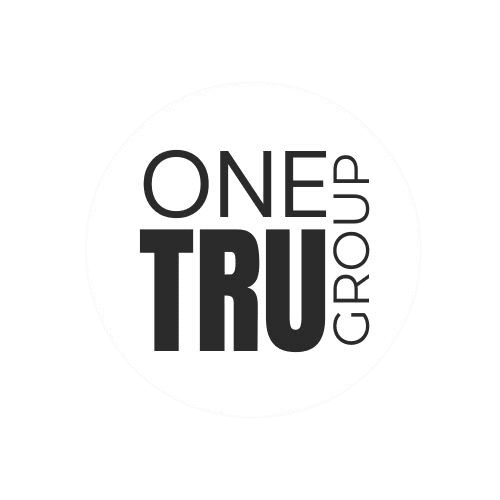What Are KPIs?
Key Performance Indicators (KPIs) are measurable values that demonstrate how effectively a company is achieving key business objectives. Organizations use KPIs at multiple levels to evaluate their success at reaching targets. High-quality KPIs should align with an organization’s goals and reflect specific, measurable outcomes that provide insight into the efficiency of business processes. The framework of KPIs is often encapsulated within the SMART criteria: Specific, Measurable, Attainable, Relevant, and Time-bound. This structure ensures that each KPI is well-defined and achievable, making it a reliable tool for performance assessment.
There are various types of KPIs suitable for different functions and industries. Quantitative KPIs are numerical indicators that provide an objective means of evaluation. For instance, sales revenue or customer acquisition cost can effectively measure performance in a sales department. On the other hand, qualitative KPIs may capture elements such as customer satisfaction and employee engagement, which are inherently subjective yet equally vital indicators of organizational health.
Examples of KPIs can be drawn from diverse sectors. In the healthcare industry, a typical KPI might be the average patient wait time, which can directly affect patient satisfaction and operational efficiency. In the education sector, graduation rates can serve as an important KPI that reflects academic success and institutional effectiveness. Furthermore, in the manufacturing industry, production efficiency can be gauged through KPIs such as overall equipment effectiveness (OEE). Collectively, these examples illuminate how KPIs transcend industry boundaries, proving relevant across various contexts and reinforcing their importance as tools for performance measurement and management.
Understanding Benchmarking
Benchmarking is the systematic process of comparing an organization’s performance metrics to industry bests or best practices from other organizations, thereby enabling businesses to measure their performance against others in their sector. The primary purpose of benchmarking in the context of business performance measurement is to identify gaps in efficiency and effectiveness, which can guide organizations toward strategic improvements. This comparison often leads to insights that are crucial for driving performance enhancements and achieving a competitive advantage.
There are several types of benchmarking commonly employed by organizations, including internal, competitive, and functional benchmarking. Internal benchmarking involves comparing processes and performance metrics within the same organization, allowing different departments to learn from one another. This type can often highlight inefficiencies that may not be apparent when looking externally.
Competitive benchmarking, on the other hand, focuses on comparing an organization’s performance with that of direct competitors. This approach allows businesses to understand their competitors’ strengths and weaknesses, providing insights that could be used to outperform them. Functional benchmarking takes this a step further by comparing performance with organizations from different industries that may nonetheless have similar processes. This diversity often results in innovative solutions and unique best practices that can be integrated into an organization’s own operations.
Conducting a benchmarking analysis typically involves several processes. Firstly, an organization should identify the key performance indicators (KPIs) relevant to its goals and objectives. Next, data is collected on these KPIs from both internal sources and external benchmarks. Analyzing this data helps organizations to not only gauge their current state but also to pinpoint areas for improvement. Following this assessment, organizations can implement changes based on best practices, which ultimately leads to enhanced operational efficiency and overall performance. By utilizing benchmarking effectively, companies can continuously evolve and maintain their competitive edge in the market.
The Relevance of KPIs and Benchmarking in Today’s Business Landscape
In the fast-paced environment of modern business, organizations are constantly seeking ways to measure and improve their performance. Key Performance Indicators (KPIs) and benchmarking are essential tools that enable companies to navigate this complexity effectively. KPIs are measurable values that demonstrate how effectively a company achieves its key business objectives. When combined with benchmarking, which involves comparing performance metrics with those of peers or industry standards, these tools can significantly enhance strategic planning and decision-making processes.
The relevance of KPIs and benchmarking lies in their ability to provide actionable insights into an organization’s performance. By establishing specific KPIs, businesses can set clear targets for success. For instance, a retail company may use KPIs such as sales per square foot and inventory turnover to gauge efficiency in its operations. These indicators not only facilitate tracking of short-term progress but also help in aligning goals with long-term strategic aspirations. Benchmarking, on the other hand, allows businesses to measure their performance against industry best practices, offering a clear perspective on their competitive standing.
Numerous organizations have effectively utilized KPIs and benchmarking to adapt to ever-changing market conditions. A notable example is a leading technology company that implemented a comprehensive KPI system to monitor product development times and customer satisfaction ratings. By benchmarking these metrics against competitors, the company identified gaps in its performance and was able to refine its processes accordingly. This resulted in accelerated product launches and improved customer loyalty, showcasing how the use of KPIs and benchmarking fosters continuous improvement and drives business success.
In conclusion, as organizations strive to remain competitive, the role of KPIs and benchmarking becomes increasingly important. These tools not only facilitate effective performance monitoring but also empower businesses to adapt swiftly to market changes, ensuring they stay ahead in today’s dynamic business landscape.
Implementing KPIs and Benchmarking: Best Practices
Implementing Key Performance Indicators (KPIs) and benchmarking within an organization requires careful planning and execution to ensure alignment with business objectives. To successfully integrate these performance measurement tools, companies should begin by clearly defining their goals. This involves understanding what is KPI and benchmarking—essentially, establishing what indicators will effectively measure success against industry standards or best practices.
First, organizations should identify strategic objectives. Selecting KPIs relevant to these objectives is critical; they must be specific, measurable, attainable, relevant, and time-bound (SMART). Organizations should strive to select KPIs that reflect both financial performance and operational efficiency, supporting a well-rounded view of performance. In addition, organizations should consider the current challenges in their industry, which can provide insight into what benchmarks will offer the most value in assessing performance.
Next, the benchmarking process can be established by gathering data from various sources, such as industry reports, peer organizations, or historical internal data. Comparative analysis against similar companies aids in identifying performance gaps and areas for improvement. It is crucial that the benchmarks chosen resonate with the unique challenges and opportunities faced by the organization to bring meaningful insights.
During the implementation phase, organizations may encounter challenges such as resistance to change, lack of clarity in KPIs, or difficulty in data collection. Addressing these issues promptly is vital. Engaging stakeholders at all levels and providing training can foster a supportive atmosphere where KPIs and benchmarks are embraced rather than resisted.
Regular reviews of KPIs and benchmarks are essential for continued relevance and adaptability to changing market conditions. Organizations should establish a routine process for revisiting these performance metrics to ensure they continue to align with shifting goals and industry standards. This proactive approach enables businesses to remain agile and responsive to new challenges and opportunities as they arise.





